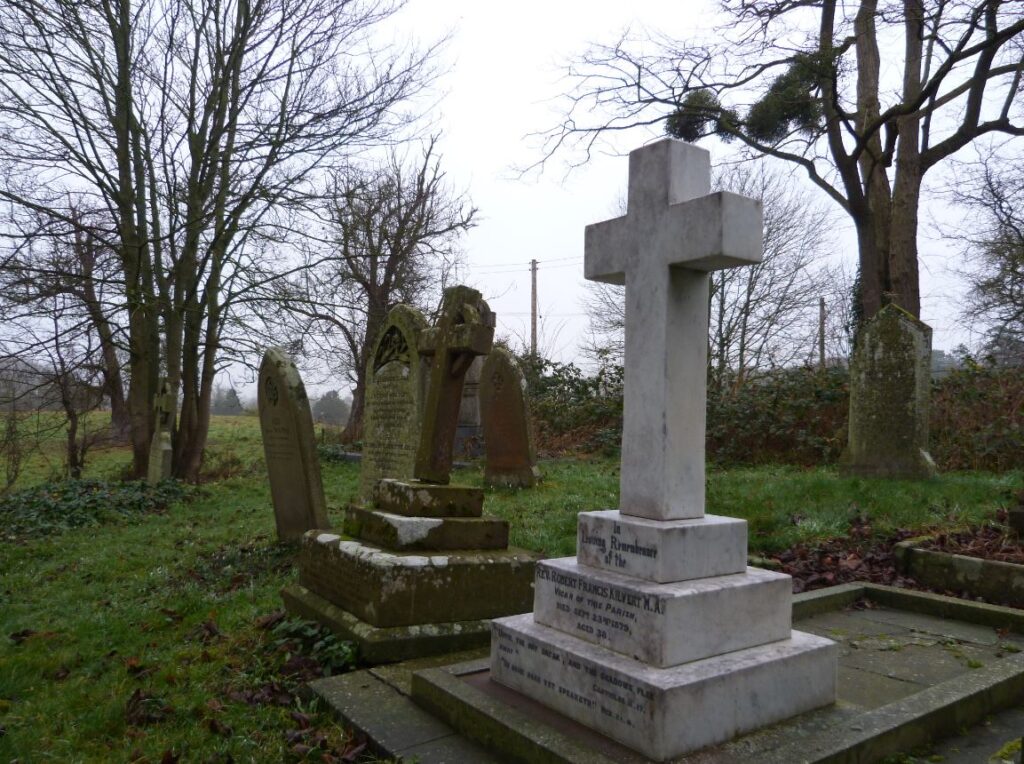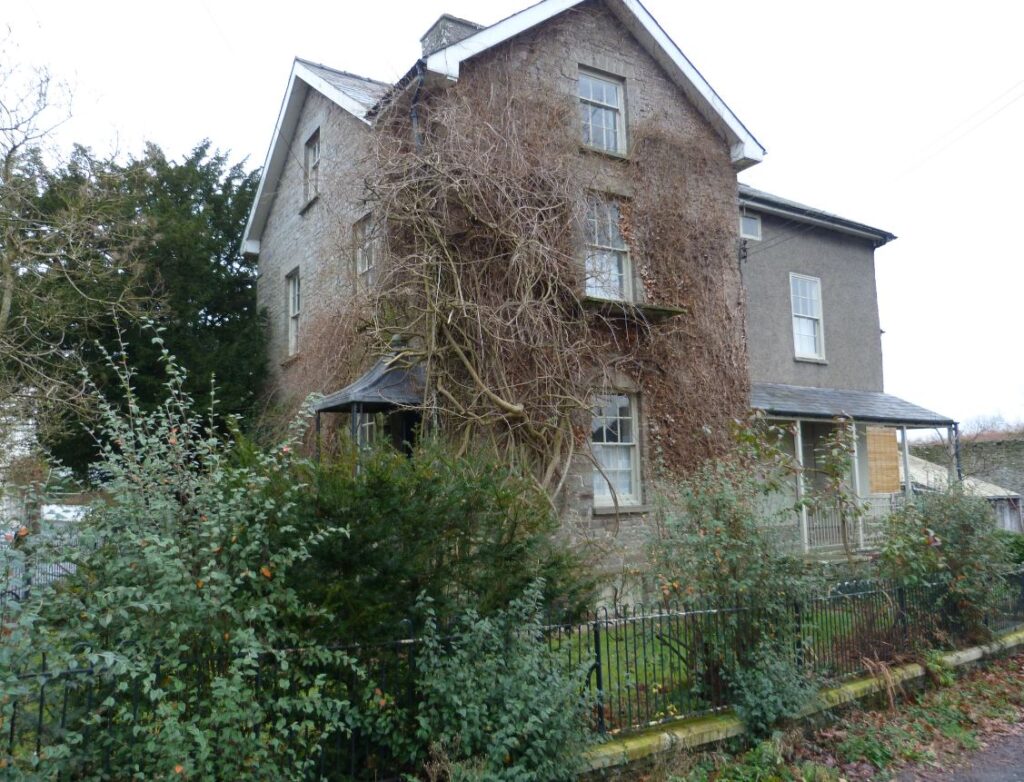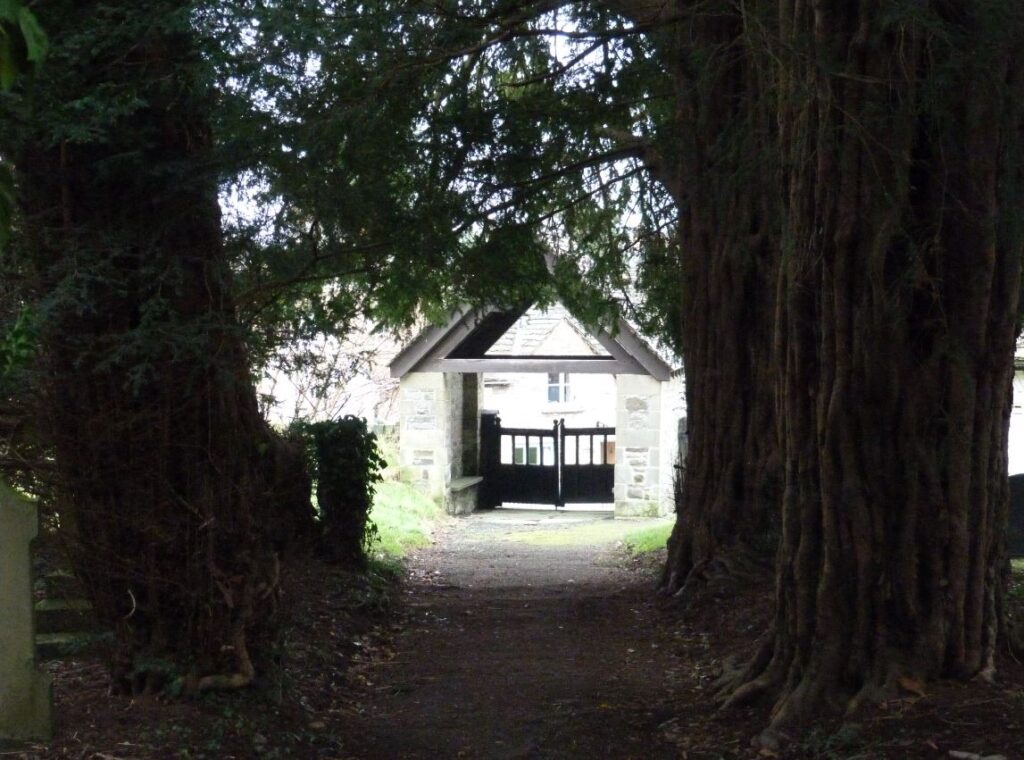
Clyro is such a peaceful place. The traffic rumbles along the A438 on the edge of the village but the untroubled churchyard is a tranquil haven and you can imagine Francis Kilvert sitting next to you on his favourite old tomb next to one of the splendid yew trees, and enjoying together the beauty of the hills where he walked and observed his parish. In his famous diaries he recorded an intimate picture of village life, and captured the essence of the lost world of the Victorian countryside which has been matched only by the work of Thomas Hardy.
Francis Kilvert was born in Chippenham, attended Wadham College at Oxford and then began his work in the Church of England as a curate in Clyro, a short distance from Hay on Wye, between 1865 and 1872. It was probably the happiest time of his life. He later served as vicar of St Harmon, Radnorshire, before his last post as vicar of Bredwardine in Herefordshire.
Kilvert was tall and bearded and regarded as being like ‘a nice Newfoundland dog.’ He was a modest and naïve young man, rather innocent really, but he soon learnt the unexpected aspects of life in Radnorshire. He was once shocked to find a local clergyman’s daughters helping to castrate lambs. Generally though, he was as comfortable with the poor as he was enjoying the picnics and the croquet and archery parties of the wealthy. Not everything was quite as idyllic as taking tea on the lawn though. He writes of poverty and mental illness, of murder and suicide.
He spent a great deal of time walking through the exquisite countryside where ‘every step was through an enchanted land,’ visiting his parishioners and recording his life in spidery handwriting in his diaries. He reflects on the people he meets, many of whom seemed to be living a life from a different century.
Victorian London might well have been embracing the Industrial Revolution but Kilvert’s parishioners would avoid a pond where they might be led astray by the Goblin Lantern and then told their boys to wear their hats the wrong way round so that they were not enticed into fairy rings and made to dance. To discover the name of a thief one family confidently believed they should wrap a toad, together with a piece of paper, inside a ball of clay which should then be boiled or roasted. The toad would then obligingly scratch the name of the thief on the paper. Oddly, modern policing seems more comfortable with a more technological approach to investigation.
Kilvert wrote about Mrs Sylvester who villagers believed was the Woman Frog. They were absolutely convinced she had the legs and feet of a frog which she concealed beneath long dresses. She rarely went outside, apart from visiting the Primitive Methodist Chapel in Presteigne, conclusive proof indeed. It was an insular world too. His parishioners believed that it was impossible for him to travel from Clyro to Wiltshire without crossing the sea.
Kilvert found very young girls attractive with the sort of enthusiasm which can make you uneasy and he kept falling in love with their older sisters. Daisy, Kathleen and Ettie are all significant figures in the diaries but his romantic dreams never prospered. The end of his relationship with Ettie Brown in 1876 had a profound effect upon him. Some have speculated that the eighteen-month gap in the diaries indicates a period of severe depression. You begin to see the intrusive presence of illness and a fear of early death when his writing resumes. He once imagined skeletons in his room and his final poem, written at the end of May 1879, tells us that his ‘songs will soon be o’er.’
In August 1879 he married Elizabeth Rowland but just five weeks after their marriage he died of peritonitis. He was 38. He is buried in the peace of the Church of St Andrew in Bredwardine and there is a plaque in his memory in Saint Michael and All Angels, the parish church of Clyro.

There is a feeling of sadness when you consider Francis Kilvert’s short life, which in some ways was sadly unfulfilled. He seems incomplete, frozen in time like an insect in amber. He was always disappointed that his poetry never interested a publisher but did begin to think his diaries ‘may amuse and interest some who come after me.’ He has certainly left behind a remarkable legacy.
All we can read however is a fragment of what Kilvert wrote. The diaries originally stretched from January 1870 to his death in September 1879, during which time it is believed that he filled 29 notebooks. His widow Elizabeth destroyed a number of them, removing all references to herself. The remaining diaries stayed within the family until they came to the attention of the author William Plomer, who prepared them for publication. The first volume appeared in 1938 followed by a second a year later and a third in 1940.
The books were tremendously popular, re-opening a door to the pastoral simplicity of a life still just within living memory, a time of peace and order suddenly swamped by the terrors of war. But the war had not only destroyed that world, but also wanted to keep it hidden.
It was wartime and there was no paper available on which to print any more extracts. So there was a delay in the preparation of further volumes and in a terrible irresponsible moment Kilvert’s elderly niece, who had possession of the diaries, destroyed them because they contained private family matters. It remains a deeply regrettable act of wanton destruction. Sometimes less is indeed more but when you read his work you always feel that it ends much too soon.

He lived in Ashbrook House in Clyro which became, for a time, a respected art gallery but which at the time of writing stands empty. On the other side of the road you can see The Baskerville Arms which he knew as The Swan and where raucous drinkers would often disturb his summer’s evenings. He writes of easy summer days ‘burning hot, sitting under the linden, reading’ or watching a solitary fern cutter at work on Vicar’s Hill but for me it is the winter sections that are the most notable.
Kilvert vividly describes a climate we no longer experience. In February 1870 there were few people in church because the weather was fearful, with a ‘violent deadly east wind.’ His whiskers were ‘so stiff with ice that I could hardly open my mouth and my beard was frozen on to my mackintosh.’ He conducted a baptism when the frozen water in the font had to be broken and the poor baby was surrounded by lumps of ice.
There were pleasures too of course. People regularly went skating on iced ponds and rivers, with bonfires on the banks and bands playing, the whole scene illuminated by Chinese lanterns whilst children played on ice slides under bright star-filled skies. However, the shadow of danger was ever-present. Kilvert reported that the organist at Calne in Wiltshire fell on ice and broke his nose. The following day his fifteen year old son fell whilst sliding on the ice, hit his head and died. Of course for many, times were hard. Men would beat the holly bushes to flush out blackbirds to eat.
His description of Christmas Day in Clyro in 1870 is particularly eye-watering. There was an intense frost on Christmas Eve and when he climbed in his bath in his room in the morning he found himself sitting on a sheet of thick ice. It broke into large pieces with ‘sharp points and jagged edges’ all around the sides of the bath tub. He writes, rather phlegmatically, that ‘it was not especially comforting’ to the naked thighs and loins.
‘The keen ice cut like broken glass. The ice water stung and scorched like fire. I had to collect the floating pieces of ice and pile them on a chair before I could use the sponge and then I had to thaw the sponge in my hands for it was a mass of ice.’
Thankfully Francis Kilvert had his reward for such bravery. As he walked to the Sunday School ‘the road sparkled with millions of rainbows, the seven colours gleaming in every glittering point of hoar frost.’
It is a vanished world, never to return. A fleeting glimpse and you will always want more.

This story will not feature in my new book, Grave Tales from Wales, which was published in July 2021. In this title though you will find 30 other fascinating gravestones from across the whole of Wales.
Find Grave Tales From Wales in the menu or use this link
Alternatively head straight to the How To Buy page